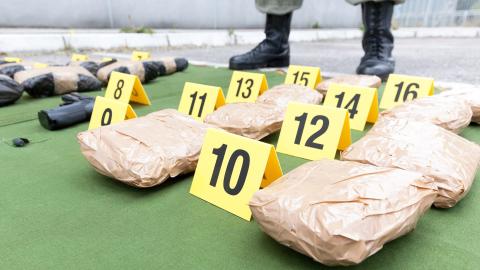Death Rituals and Superstitions
The women have (ways) of divining, whether the husband or wife shall die first by the number of letters in Latin, or the husbands, and wives christian-names.
John Aubry 1626-1697
Plants and Death
Plants have been associated with the burial of the dead since at least the 16th Century. In the medieval period placing flowers on graves may have been problematic as the vicar or curate was often allowed to graze his animals in the churchyard. In the South of England disturbances resulting from this were sometimes guarded against through constructing wicker or willow fences around the grave. However people started objecting to anything that might damage or disturb the grave, especially in the wake of new ideas about reverence to the dead in order to protect expensive monuments such as gravestones which were becoming increasingly fashionable.
Strewing flowers on graves has been noted in sources as early as the 1770s. However in many areas of England this practice was considered heathen and was banned in some churchyards right up until late in the 19th Century. An exception to this can be found in Wales where flowers were often planted on top of graves to symbolise the time of life in which a person died. Daffodils, primroses and violets would be planted over infants, roses for those who died in mid life, and rosemary for those who died in old age.
In Early Modern Britain references to flowers being incorporated into burial shrouds are more common, often so as to compensate for the smell of a decomposing corpse. Instead of scattering flowers, in England it was more common to use evergreen shrubs such as rosemary and box, with their qualities of not wilting symbolising remembrance. This can be seen in the account of a French visitor to England in 1719 who noted that sprigs of these plants were carried behind funeral processions and thrown on top of the coffin into the grave. However towards the end of the 19th Century flowers started to become popular again, leading eventually to the relatively recent practice of wreaths adorning the graves of loved ones.
Direction of Burial
Others practices are linked with ancient beliefs. The burial of bodies in an East- West direction is often linked to Christianity, while in Judaism the dead are buried to face the Last Trump, supposedly coming from the East. However this practice was carried out well before the introduction of these religions to the British Isles. It has been hypothesised that this was done so that the body faced the rising sun, an important aspect of pagan sun cults that are postulated to have existed.
Fear of Premature Burial
During the 18th and 19th centuries there developed a morbid fear of being buried alive, which lead to the invention of various devices with which would hopefully alert people to the fact. These included the safety coffin, where a bell was placed on top of the grave. One end of a rope was fixed to the bell and the other end placed in the hand of the deceased. If the poor unfortunate soul found themselves not to be dead after all they could ring the alarm. Other safety coffins involved elaborate contraptions of tubes and mirrors which allowed gravediggers to look into coffins for signs of life, or putrefaction.
Modern wakes are often held after a burial or cremation but traditionally friends and family would keep a vigil over the dead in the days leading up to the funeral. Contrary to popular belief the term ‘wake’ does not refer to loved ones sitting with the recently deceased in case they were not in fact dead and decided to wake up. It’s more do to with staying awake and keeping watch over the body as a sign of devotion until it is time for the funeral.
Closing Eyes
Some death rituals are practicalities. The closing of the eyes of the recently deceased in Britain is cited as being due simply to guard against rigor mortis setting in while they are still open, the eyelids being one of the first parts to be affected. However this was often combined with a superstition that being looked at by a corpse could threaten you and your kin. To aid this, pennies were sometimes placed on eyelids to keep them shut.
Pennies
Pennies have long been associated with death in addition to their use as weights to seal the eyes shut. In ancient Greece and Rome, a coin was placed inside the mouth in the belief that the dead’s soul would need it to pay the ferryman Charon to take them across the river Styx into the afterlife. However this practice is also associated with the Wales the North of England, with one 17th Century man recalling that it was ‘to give to St Peter.’
Mirrors
The belief that all the mirrors in a dead man’s house should be covered at death stems from the 16th Century idea that one’s reflection was in fact an embodiment of the soul. It was thought that at death the soul escaped the body and so was vulnerable to be trapped in the mirror glass and taken away by the devil. The Victorians believed that if you saw yourself in a mirror in a room where a person had recently passed away you too would die shortly after.
Did you know?
It was once believed that if a fire spat out a coffin shaped ember it foretold death, as did a bird entering the house, while doing the laundry on New Years Day was said by some to cause death by ‘washing one of the family away’., Superstitions surrounding death have lingered through the ages. Old wives tales have come and gone but many are still repeated today which have their origins in beliefs about death that were common centuries, even millennia ago…
















